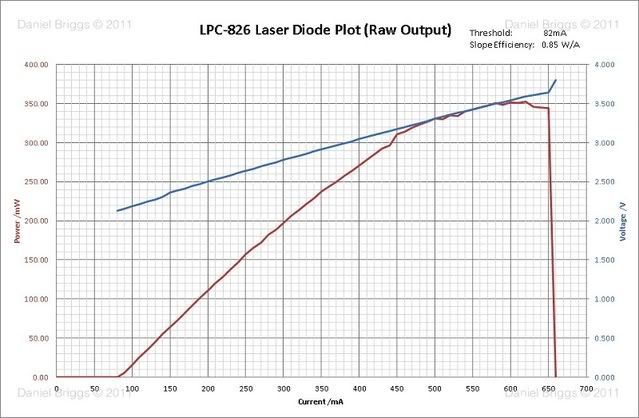- Joined
- Sep 12, 2013
- Messages
- 25
- Points
- 0
Hi all
i am old member but i am little speak english. i was read many many topics at forum. i research how i build burning laser... And last....
i was buy a diode LPC 826 and the host to this two link..
This is LED link,
660nm 300 400mW CW Red Laser Diode LPC 826 | eBay
This is modul host
http://www.robotmalzemeleri.com/index.php?route=product/product&product_id=109
Now i am waiting LED from sales guy.. i take a host. But i have not driver LED. i was read how i build LM317 driver. But i have a question.
i am simulate with proteus LM317. Supply 12 volt. i build a constant current circuit for 400 ma ( 0.40 amp ). it is ok but i'm confused. if i run the circuit in simulate the LED diode voltage be high 2.2 volt. is it problem? 5.13 volt to high for LPC 826. This current is ok and this circuit is constant current circuit.
The sales guy write the ebuy page the supply voltage must be 2.2 volt max.
Please explane to me how i drive the diode? Whitch circuit use for LPC826 ?
if i am supply diode with this circuit do i have a problems? Please help me..
This is simulated circuit for diode driver

i am old member but i am little speak english. i was read many many topics at forum. i research how i build burning laser... And last....
i was buy a diode LPC 826 and the host to this two link..
This is LED link,
660nm 300 400mW CW Red Laser Diode LPC 826 | eBay
This is modul host
http://www.robotmalzemeleri.com/index.php?route=product/product&product_id=109
Now i am waiting LED from sales guy.. i take a host. But i have not driver LED. i was read how i build LM317 driver. But i have a question.
i am simulate with proteus LM317. Supply 12 volt. i build a constant current circuit for 400 ma ( 0.40 amp ). it is ok but i'm confused. if i run the circuit in simulate the LED diode voltage be high 2.2 volt. is it problem? 5.13 volt to high for LPC 826. This current is ok and this circuit is constant current circuit.
The sales guy write the ebuy page the supply voltage must be 2.2 volt max.
Please explane to me how i drive the diode? Whitch circuit use for LPC826 ?
if i am supply diode with this circuit do i have a problems? Please help me..
This is simulated circuit for diode driver

Attachments
Last edited:







